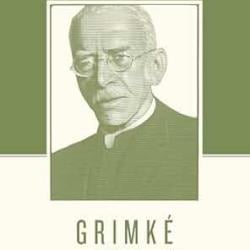This post is part of a series walking through the second volume of Abraham Kuyper’s Common Grace.
On to the second volume, and it is a doozy! Logging in at 800+ pages, this second volume begins a theological exploration of Common Grace that builds on the Scriptural foundation laid in volume 1. I suspect I’ll disagree with much more of this volume than I did with the previous one, but we’ll have to see as we work through this doorstop of a book.
Kuyper begins by reminding us that doctrine should be both heavenly and practical. This means a proper view of God, a proper view of man, and a proper view of the relationship between the two is critical (and Kuyper is clearly referencing the first paragraph of Calvin’s institutes here).
Focusing on mankind, we see that there are two parts: that which can be observed and that which is hidden. In terms of the latter, we must take one of three approaches:
- We can be agnostic, and assume that no one really knows (or even can know); so let’s leave the mystery as mystery.
- We can make and test hypothesis, using the scientific method; reason becomes the basis for experimentation. At the very least, this approach has proven naked materialism wrong, because every experiment shows that there’s a spiritual reality which must be accounted for.
- We can rely on what revelation tells us. In this case, God reveals the mystery.
Denying God’s enlightening of the great mystery of human nature (1) and using our own light to try to dig into the mystery (2) are equally sinful. Common grace is the means of revelation of at least some aspects of human nature, and what it reveals is that there are two powers at work in man: 1) sin and 2) goodness/beauty. We see both in common grace, though when we focus on one it tends to obscure the other. In this contradictory obscurity, we see the mystery that refuses to let us see only sin or only good.
This mystery deepens when particular grace comes along–for we see evidence of good in the unregenerate, and evidence of sin where the cross reigns.
“Our faith claims to be indispensable in overcoming sin and making an honorable life possible. And now comes the unbelieving person who with evidence shows us how particularly in our circles, all kinds of sin are still active, whereas in the circle of the unbelievers all kinds of good and attractive manifestations of a nobler approach to life can be observed.” (5)
Simply dividing the world between believers and unbelievers or between the church and the world is too simplistic an approach. The mystery lies in the complex interplay between good and evil in the world that refuses to let us retreat into either a spiritualistic apartness from the world on the one hand or a deep dive into worldliness on the other. If nothing else, a pure spiritualism that denies the reality of the world isn’t possible (just ask mothers)–we must live in the world. Likewise pure worldliness gives no satisfaction, especially to the child of God.
So we need a third way to balance our confession with our observation without weakening either. Not only are we regenerate, but we are also still sinful. Not only is the world unregenerate, but there is still good and beauty in it. Giving up either of this doesn’t really solve anything because reality keeps breaking through. Which leaves us in a difficult spot, which is where we will pick up next time.
Dr. Coyle Neal is co-host of the City of Man Podcast and an Associate Professor of Political Science at Southwest Baptist University in Bolivar, MO













